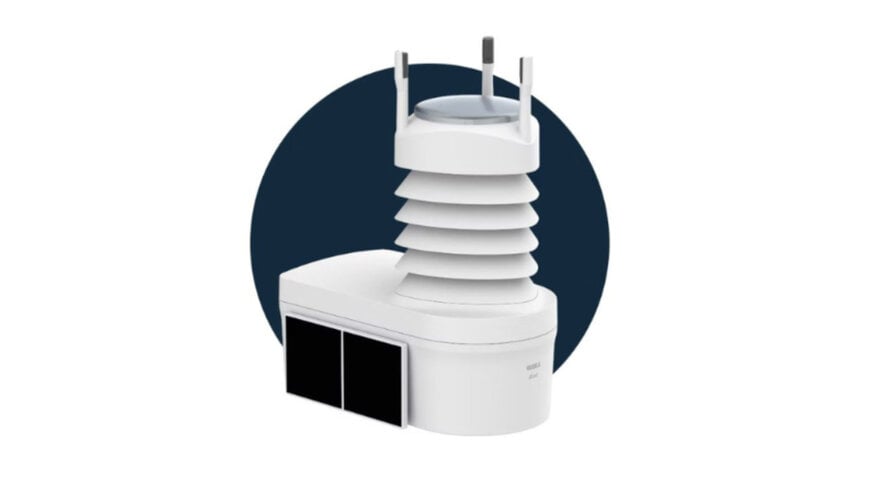Vaisala's Xweather Optimize improves district heating forecasts, saves €300,000 yearly
By leveraging local sensor data and machine learning, improving hyperlocal weather forecast accuracy by just one degree significantly enhances heat production efficiency.
www.vaisala.com

As the effects of climate change are becoming more visible each year, the need for solutions that reduce emissions is immediate. A new solution, Xweather Optimize from Vaisala, a global environmental measurement tech leader, uses hyperlocal weather data to help district heating providers optimize energy production and resource use.
District heating operators depend on accurate heat demand forecasts to optimize both heat production and distribution. Xweather Optimize supports this by providing hyperlocal, network-specific weather forecasts tailored to each network’s characteristics.
“With improved forecast accuracy and fewer large errors, operators can reduce unnecessary and costly peak boiler activations, adjust input water temperatures more precisely, and apply dynamic safety margins. This not only ensures efficient energy delivery, even to the most distant buildings, but also enables confident participation in reserve markets to help balance the grid,” explains Jussi Paanajärvi, Product Manager at Vaisala for Xweather Optimize.
Traditional weather forecasts are not accurate enough at the local level
Weather, particularly air temperature, is the single biggest factor affecting the daily demand for district heating, and the most variable. Traditional weather forecasting draws on a myriad of data points from weather stations, sensors, and satellites around the world. However, due to the sparse sensor network, these weather forecasts do not account for the differences in urban topography, microclimates, and other factors that affect the temperature in different areas.
This leaves energy companies exposed to errors in the temperature forecast, which can have an outsized impact on operational costs and efficiency.
Small improvements can lead to large savings in effective network control and energy trading
Xweather Optimize is already being used by some of the largest district heating providers in Finland, including Fortum in Espoo, where the new solution reduced the number of errors greater than 2.5 °C in the 24-hour forecast by 59% compared to general weather information.
“Our observation network of Vaisala weather stations provides us with accurate local data of critical weather parameters, enabling us to optimize heating supply temperature more precisely than before,” says Viki Kaasinen, Director, Digital Transformation at Fortum.
Paanajärvi explains further, “by minimizing weather forecasting errors, we minimize heat prediction errors and enable companies to optimize cost-efficient heat production and distribution. Improving the 1-to-48-hour forecasts also helps energy traders reduce the need to correct shortfalls and surpluses in the imbalance market, as energy demand is highly sensitive to changes in the weather.”
The annual cost savings from reducing large forecasting errors can be substantial.
- €120,000 saved by optimizing heat production and minimizing unnecessary initiations of peak boiler plants.
- €80,000 saved with effective network control by managing local constraints and bottlenecks more effectively with district-specific demand forecasts, as well as effectively calibrating confidence limits to dynamically adjust safety margins.
- €100,000 saved in energy trading with more accurate bids to balance supply and demand in day-ahead and intraday markets, as well as reducing the need to correct shortfalls and surpluses in the imbalance market.
The cost projections are based on serving a population of 200,000 with an annual demand of 2,000 GWh with two CHP plants and decentralized heat plants using a mix of gas, oil, and pellet fuels. The figures show the minimum annual savings with Xweather Optimize compared with a baseline forecast that averages two errors over 4 °C in the next 24 to 48 hours, where the Vaisala forecast has no large errors over 4°C.
How does it work?
In a nutshell, Xweather Optimize combines an easy-to-install wireless weather sensor network with software that analyses the data and provides the user with improved local weather forecasts. The software uses a machine learning model that takes the ground-truth observations and local weather patterns as inputs to continuously improve the forecasts as time goes by.
“From installation to operation, we aim to make the solution as easy as possible. The customer gets the insights they need, and we take care of the rest,” explains Paanajärvi.
www.vaisala.com

